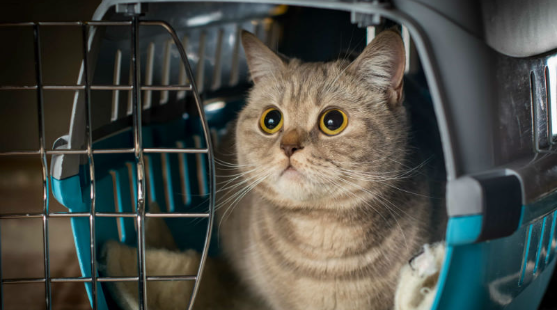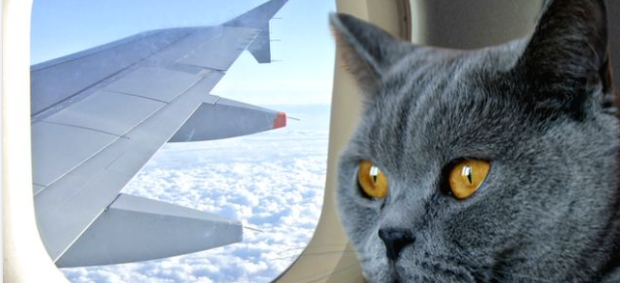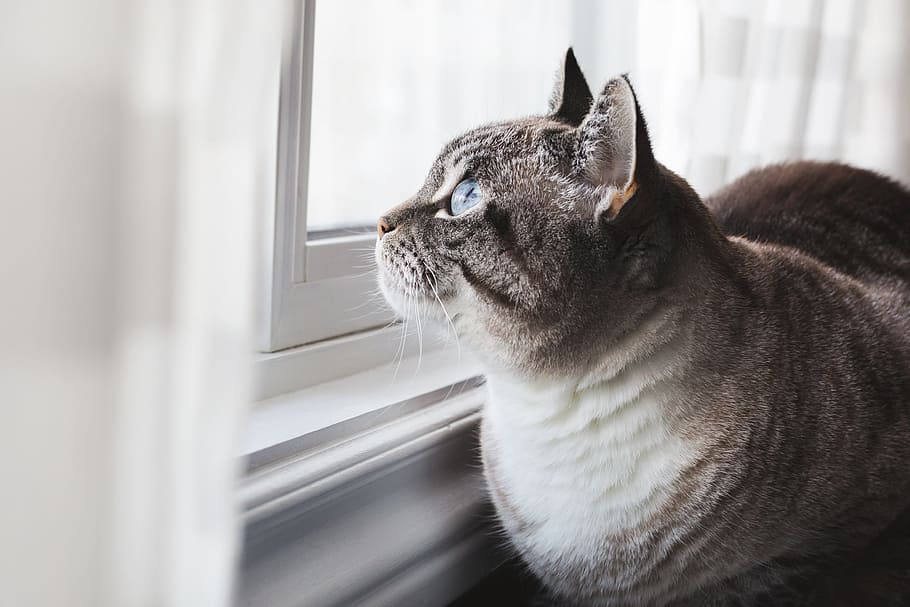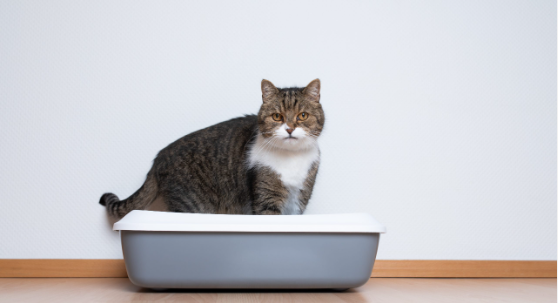Reducing Cat Travel Stress
Is It Stressful For Cats To Travel?: An Introduction
Travelling with cats is a common occurrence, whether it’s a quick trip to the vet or a long journey to a new home. While some cats may handle travel with ease, others may become incredibly stressed and anxious. Understanding the impact of travel on cats is crucial in ensuring their safety and well-being.
The Definition of Cat Travel
Cat travel refers to any type of transportation that involves moving your cat from one location to another. This can include car trips, plane rides, train journeys, or even short walks in their carrier. Regardless of the distance travelled or method used, it’s essential to be aware of how traveling can impact your cat’s mental and physical health.
The Importance of Understanding Cat Travel Stress
Cats are sensitive creatures that rely heavily on routine and familiarity. Any disruption to their environment or daily routine can cause them stress and anxiety.
This includes travel. When cats experience stress during travel, it can lead to a variety of negative behaviors and health issues such as vomiting, diarrhea, loss of appetite, aggression towards humans or other animals, and other signs that indicate they are not comfortable during the journey.
Understanding cat travel stress is crucial in reducing its impact on your furry friend. By taking steps like choosing an appropriate carrier for your cat or providing familiar smells and objects during transport you can reduce the amount of stress they feel while travelling making this experience much more comfortable for them.
Cat Travel Stress: Understanding the Causes and Symptoms
Causes of Stress in Cats During Travel
Just like humans, cats can feel stressed and anxious when they are taken out of their comfort zone. There are several factors that can cause stress in cats during travel. One of the most common causes is motion sickness.
Cats who are not used to travelling by car, plane, or any other means of transportation may experience motion sickness which can lead to vomiting, nausea, and discomfort. Another cause of stress in cats during travel is unfamiliar surroundings; travelling to a new place with new smells, sounds, and sights can be overwhelming for some cats.
Additionally, the noise and vibrations from cars or planes can add to the stress. Another factor that contributes to cat travel stress is separation anxiety.
If your cat is used to being around you all the time, being put into a carrier and separated from you for an extended period of time can cause it anxiety. The same goes for leaving your cat behind – knowing that you’re leaving without them could lead to feelings of abandonment.
Symptoms of Stress in Cats During Travel
It’s important for pet parents to recognize signs that their furry companion may be stressed during travel so they can take measures to reduce it or seek veterinary care if necessary. Some common symptoms include excessive meowing or crying, panting, drooling, restlessness, lethargy, or hiding inside the carrier.
Another symptom is urinating or defecating outside their litter box which might indicate that your cat feels overwhelmed and cannot control its bladder anymore due to high levels of anxiety. In extreme cases where a cat experiences severe stress during travel such as panic attacks or seizures due to fear, it’s highly recommended that you contact your veterinarian right away for proper diagnosis and treatment options.
Understanding these causes and symptoms will help pet parents minimize their feline friend’s stress during travel. In the next section, we will discuss ways to prepare your cat for travel to make the journey less stressful and more comfortable.
Preparing for Cat Travel
Cats can be quite finicky creatures, and traveling can be a particularly stressful experience for them. Therefore, it is essential to prepare your cat for travel well in advance. One of the primary things to consider when preparing for cat travel is choosing the right carrier.
Your cat’s carrier should be spacious enough to allow your pet to stand up, turn around and lie down comfortably. The carrier should also have enough ventilation as well as a secure locking mechanism to prevent accidental escape.
Familiarizing your cat with the carrier is another critical step in preparing your pet for travel. You can start by placing the open carrier in an area where your cat spends most of its time so that it gets used to its presence.
You can also place treats, blankets, or toys inside the carrier so that it associates positive experiences with it. Gradually increase the amount of time you leave the carrier open until your pet feels comfortable spending an extended period inside it.
When packing for a trip, ensure that you pack all of your pet’s essentials such as food, water, litter box, and medications if required. Make sure you pack enough food and water for the entire journey plus some extras in case there are any unexpected delays along the way.
Choosing the right carrier for your cat
The choice of a proper carrier is fundamental when it comes to traveling with cats. While selecting a suitable one, take into account factors such as size, ventilation, portability, durability, and design (e.g., top-loaders vs side-loaders).
The ideal size of a cat’s carry-on depends on its breed and size; big cats need more space while smaller ones require less space. A well-ventilated compartment ensures appropriate air circulation throughout every corner of their resting place during long trips.
Portability involves factors such as weight – lighter carriers are more comfortable to handle – while durability mainly refers to the material used in constructing a carrier. A sturdy and robust carrier provides better protection and is more reliable for long journeys.
Familiarizing your cat with the carrier
Get your feline friend used to its new environment before any trip. Familiarizing your cat with the carrier can significantly reduce stress levels during travel.
Encourage your cat to explore the compartment, placing a blanket or toy inside to make it more inviting. Rewarding your pet with treats and praise when it goes inside is another great way to get them familiarized with their new home.
A good habit is taking short trips around town or up and down the street, allowing your pet enough time and space for adjustment. Over time, increase the duration of these trips little by little until you feel confident that they are comfortable enough for longer trips.
Packing essential items for your cat’s comfort
When packing essential items for your cat’s comfort during travel, consider factors such as food, water, bedding materials, litter box plus a first aid kit if necessary. Pack a sufficient amount of food and water based on how long you’ll be away from home; always make sure there is extra in case of unpredicted delays. Bedding materials should be soft and comfortable while durable enough not to wear out too quickly during travel.
Choosing a litter box must be spacious enough so that cats have ample room to move about freely; you may consider disposable options if on an extended trip or opt for washable ones if going on short ones instead. Pack any medications required by cats regularly along with any other essentials recommended by vets such as calming sprays that help soothe anxious pets during travels.
Tips to Reduce Cat Travel Stress
Cats are creatures of habit and any kind of change in their routine can cause them to become stressed or anxious. Travelling is no exception and the stressors associated with travel can be overwhelming for most cats. Fortunately, there are several ways to help reduce the stress your cat experiences while travelling.
Using Pheromone Sprays and Diffusers
Pheromone sprays and diffusers are a great way to calm your cat during travel. These products mimic natural feline pheromones, which can have a soothing effect on your cat. Sprays can be applied directly on the carrier or bedding, while diffusers plug into an electrical outlet and release pheromones into the air.
It is important to note that these products may take some time before they start working effectively, so it’s important to use them well in advance of the trip. Also, be sure to follow package instructions carefully as overuse of these products may have the opposite effect on cats.
Providing Familiar Smells and Objects
Cats rely heavily on their sense of smell to feel safe and secure in their environment. By providing familiar smells when travelling, you can help reduce some of the anxiety associated with being in an unfamiliar place. Be sure to bring along items that have familiar scents such as bedding or toys from home.
This will help create a positive association for your cat during travel. Additionally, placing a piece of clothing worn by its owner with familiar scents in the carrier will also provide comfort for your furry friend.
Taking Frequent Breaks
Long car rides or flights without breaks can cause significant stress for cats during travel. When possible, it’s best to plan frequent breaks throughout your trip where you can allow your cat out of its carrier for exercise, food, and water.
This will not only help reduce stress but also provide an opportunity for your cat to stretch their legs and use the litter box. If you are travelling by car, it’s also important to secure the carrier safely so that your cat is not jostled around during sudden stops or turns.
Plan ahead and research rest areas along your route where you can take breaks with your furry friend. By taking frequent breaks, you are helping to reduce the stressors associated with traveling for cats.
Common Mistakes to Avoid During Cat Travel
Cats can be finicky and sensitive creatures, especially when it comes to traveling. Even the slightest mistake can cause stress and anxiety in your feline friend, making the journey miserable for both you and your pet. Here are some common mistakes that you should avoid during cat travel:
Overfeeding or Underfeeding Your Cat Before Travel
Although it may be tempting to overfeed your cat before a long trip, this can lead to an upset stomach and digestive problems. On the flip side, underfeeding your cat before travel can leave them feeling hungry and uncomfortable throughout the journey. It’s essential to stick to your cat’s regular feeding schedule, providing them with small amounts of food leading up to the trip.
If your cat suffers from motion sickness or anxiety during travel, consider talking to a veterinarian about medication or natural remedies that can help ease their symptoms. Additionally, avoid giving your cat any treats or unfamiliar foods during travel as this could cause digestion issues.
Not Providing Enough Ventilation in The Carrier
Proper ventilation is crucial when it comes to travelling with cats. Without adequate airflow, your furry friend could suffer from overheating or lack of oxygen leading to respiratory distress. Ensure that the carrier you choose has plenty of ventilation holes on all sides of the carrier for optimal air circulation.
It’s also important not to obstruct any of these holes with blankets or other items inside the carrier. If you’re traveling by car, make sure that there is enough airflow throughout the vehicle by rolling down some windows slightly.
Not Securing The Carrier Properly
One of the most critical aspects of travelling with cats is securing their carrier safely in place. A loose carrier can tip over easily during transit resulting in serious injury or escape leading t a dangerous outcome for both you and your pet.
When travelling by car, secure the carrier with a seatbelt or other reliable restraint system. Alternatively, you can place the carrier on the floor of the vehicle behind the seats.
If you’re flying with your cat, ensure that the carrier meets airline requirements and is properly labeled with your contact information and itinerary. By avoiding these common mistakes during cat travel, you can help to reduce stress and anxiety in your furry friend, making for a more comfortable and enjoyable journey for both of you.
Conclusion
After reviewing the causes, symptoms, and ways to reduce stress in cats during travel, it is clear that this is an important topic for cat owners. Travel can be stressful for cats, but with proper preparation, it can also be a manageable and positive experience.
It is crucial to choose the right carrier, familiarize your cat with it, pack essential items for your cat’s comfort, and take frequent breaks during the trip. Using pheromone sprays and diffusers as well as providing familiar smells and objects are also helpful tips to reduce stress in cats during travel.
Reducing stress in cats during travel is essential for their physical and mental well-being. Travel stress can lead to health issues such as vomiting or diarrhea or even anxiety disorders later on.
By following the steps outlined above, cat owners can ensure a comfortable journey for their furry friends while reducing their own stress levels as well. Investing time in preparing the right way will go a long way toward ensuring happy travels with your feline companion!




